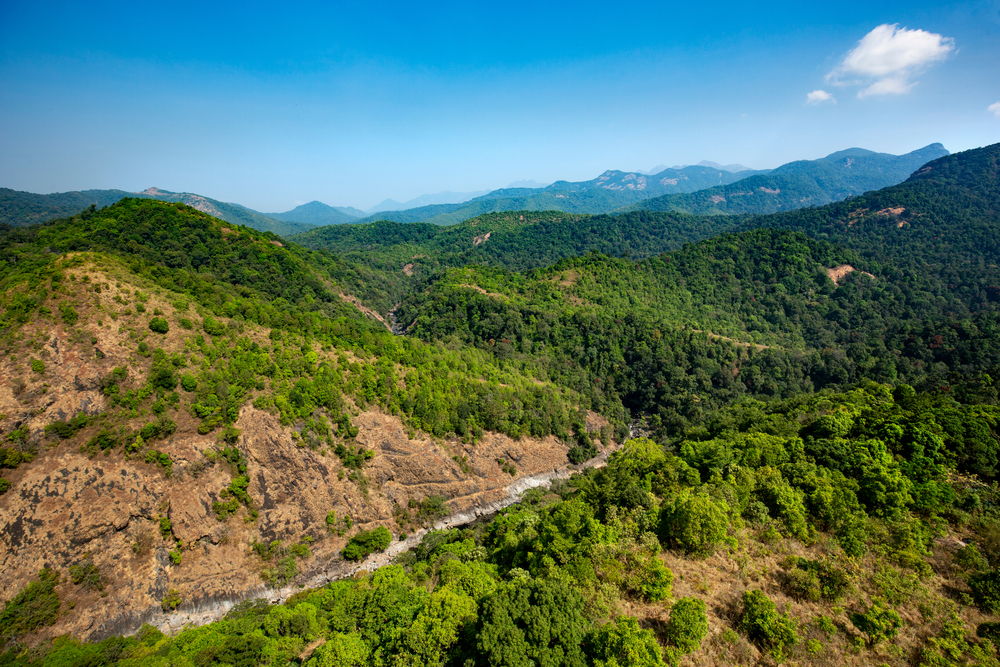Silent Valley Overview
Silent Valley National Park, known locally as Sairandhri Vanam, is a pristine natural sanctuary located in the Nilgiri Hills of Kerala, India. Covering an area of approximately 89.52 square kilometers (34.56 square miles), the park is part of the Western Ghats, a UNESCO World Heritage Site. Silent Valley’s remote location, lush greenery, and diverse ecosystems make it one of the most enchanting and ecologically significant areas in the region. The park is centered around the Kunthi River, which originates in the Nilgiri Hills and flows serenely through its core, offering breathtaking views of pristine landscapes.
The terrain of Silent Valley National Park is a blend of rolling hills, steep valleys, and dense tropical forests. These forests, predominantly tropical rainforests, are known for their towering trees, thick undergrowth, and interlocking canopies that allow only dappled sunlight to penetrate. The park is home to several prominent peaks, including Anginda, which rises to an elevation of approximately 2,383 meters (7,818 feet). Its undisturbed ecosystem supports a rich variety of vegetation, including rare orchids, medicinal plants, and giant trees that soar above the forest floor. The park’s name, “Silent Valley,” is believed to originate from the notable absence of cicadas, creating an almost surreal silence in contrast to the usual cacophony of tropical forests.
The wildlife in Silent Valley is as diverse as its terrain. The park is renowned for its population of the endangered Lion-tailed Macaque, a species found only in the Western Ghats. Other key mammals include the Nilgiri Tahr, Indian elephant, Malabar giant squirrel, and tiger. The birdlife is equally impressive, with species such as the Malabar pied hornbill, Nilgiri wood pigeon, and the Great Indian hornbill making their homes in the treetops. The park also supports a variety of reptiles, amphibians, and insects, many of which are endemic to the region.
Silent Valley National Park is celebrated for its untouched beauty and key attractions like the watchtower at Sairandhri, which offers sweeping views of the surrounding forests and valleys. The Kunthi River’s clear waters and the serene ambiance of the dense forest provide visitors with an unparalleled connection to nature. Trekking and guided nature walks are among the most popular activities, allowing visitors to immerse themselves in the park’s natural splendor while learning about its ecological importance.
The park’s history is a testament to successful conservation efforts. In the 1970s, plans to construct a hydroelectric dam threatened the fragile ecosystem, sparking widespread protests and leading to its designation as a national park in 1984. Today, Silent Valley is a model of effective management and protection, but challenges remain in safeguarding the area from illegal logging, poaching, and human encroachment. Continued conservation efforts focus on preserving its unique biodiversity while fostering sustainable ecotourism.










































































